THE GREEK COMMUNITY BEFORE OUR CHURCH
At the beginning of Greek immigration to Kingston, the Greek community was very small. It was comprised of a few close-knit families, and had no formal organization. Such early families were, among others, the Karis, Zakos, and Sakell families. As Maria Karis Brousalis remembers, they all considered themselves cousins with one another. They would see each other on Name Days and holidays. Margaret and Peggy (first cousins, in the Zakos family) recalled in their interviews how the Greek families would get together often for special occasions even before there was an official community.
St. George’s Cathedral played an important role in the Greek community before we established our own church: this is where most Greeks attended church services. It is within the Chapel of the Good Shepherd at St. George’s that Greek Orthodox services would eventually be held, when Greek Orthodox priests from other cities were brought in to Kingston to conduct these church services. Most Greek Orthodox weddings in Kingston before our church was established took place at St. George’s.
Something important to note about any Greek Community is that its church provides much more than a religious center. In many ways, the church is the center of the Greek community and facilitates its cultural aspects as well. This is why, before the establishment of our own church, the early Greeks in Kingston were taking part in other cultural organizations such as AHEPA and the Daughters of Penelope. Once the Church was established, these organizations slowly phased out.
The Greek community in Kingston experienced two distinct waves of immigration: one before WWI and one after WWII, which was significantly larger. It was after the large wave of immigration from Greece to Kingston after World War II that the establishment of an official community charter and the establishment of a church was necessary, in order to provide a cultural and religious space for the increasing Greek population in Kingston. Leading up to this decision, however, many narrators included in this project describe what the days were like before we had our own church.
John Karkoulis, for example, remembers arriving to Kingston around the same time as many other Greeks during this second wave of immigration. There were 15-20 “old families” from “before the war” already in Kingston, but there was no official community. As more people were arriving to Kingston, and were seeking out opportunities to be part of Greek communities, half the Greeks in Kingston would go to services held by a priest from Watertown and half the Greeks would go to services held by a priest from Ottawa. The community was split, and each side disagreed with the other. It was clear something needed to change.
ORGANIZING UNDER A CHARTER AND ESTABLISHING THE CHURCH
It was in 1961 that a group of dedicated Greeks in Kingston – including George Speal, Chris Zakos, Frank Karis, Chris Nikas, Louis Leos, and others – approached the Bishop in Toronto about organizing themselves under their own community charter. That same year, the Archbishop Athenagoras visited Kingston to help the Greeks establish their community. There was a general meeting held at the old LaSalle Hotel at Princess and Bagot, which every Greek Kingstonian was invited to attend. The Archbishop advised them to form one community together, instead of being split between those who preferred Watertown and those who preferred Ottawa. Both Mike Kanellos and Chris Nikas remembered attending this meeting and recalled it during their interviews. Right then and there, during the meeting, the Archbishop held a fundraiser. He passed a hat around and invited everyone to donate money which would go towards the establishment of the community. They collected around $6,000 that day – a huge sum of money in 1961! We owe a lot to those who donated to the establishment of our community early on, either in the form of monetary donation or through time and effort donated. Many were making wages of only $20-$30 a week at the time, and so they donated a significant portion of their wealth selflessly to our community. We can see, too, how eager everyone was to see a Greek community established.
In the Fall of 1961 the Greek Community in Kingston received its official charter. During this time, a priest by the name of Father Kostas Glouftis was visiting Kingston every second Sunday from Toronto, preforming Greek Orthodox services in the Masonic Hall on Queen’s Street.
Our own church was purchased in 1963, although through the stories our narrators tell we can see that the church was not quite in full use until 1964. Weddings were still being held in St. George’s until 1964. Louis and Toula Leos had our community’s last Greek Orthodox wedding ceremony at St. George’s in 1963. Our first full-time priest in Kingston was Father Demetrios Kavouris. According to Fil Menikefs, who was there during the establishment of our church, there were various locations that could have become the site of the new Greek church: one was at Division street and another one at Brock street, but they eventually decided to buy the one at 121 Johnson street. The building was designed in 1882 by the architect Robert Gage, originally intended to be a Baptist church.
Everyone in the community worked together to turn the building into a Greek Orthodox Church. Toula Leos, whose husband was one of the members who approached the Bishop to establish a community, remembers how excited everyone was to have their own church. She went with John Karkoulis to Greece to buy the icons for the church. People got together in their own free time to paint the church; and she helped organize fundraisers, along with others, to fund community projects. Everyone in the community was working very hard, and a lot was accomplished in just a short amount of time. John Karkoulis played a large role in the early renovations of the church. In his interview, he speaks about how the church was “completely empty” when they bought it. There is a lot of decorating and embellishing required to turn a space into an Orthodox church. Everything inside an Orthodox church is filled with splendor and holds symbolic value. John had the task of buying the other Greek Orthodox church materials, which he traveled to Greece specifically to purchase and bring back to Kingston. He bought them all from a local shop in Athens.
Once the church was up and running, Fil Menikefs remembers how nice it was to see the Greeks every Sunday; they would get together and socialize after the church service. They had dances at the LaSalle hotel in order to raise money for the restorations in the church. There was now a permanent priest in Kingston, who lived in what used to be the priest’s house, where the parking lot is today. In time, the community began a Greek School and the second full-time priest our community had, Father Polychronadis, also taught in the Greek school. Maria Triada Karkoulis, a long-time and founding member of our community, remembers that the Karis family began a choir; Maria Triada became a chanter in the choir and has been a chanter ever since.
The Church has been through many restorations. Its interior was completely restored in 1972. In 1975, the first Church Hall was added, making it possible to hold cultural events such as Folklore and Greek School within the walls of the church. The project to establish the first hall was led by Athan Anagnostopoulos. To the right are photos of some Greek Community members working on constructing the first church hall and the bar. As we can see, many community members have volunteered their time and labor towards the building and expanding of our church. A second hall was added later on, expanding upon the original building. Now, with the second hall, we have a huge banquet area that serves as a perfect place for wedding and baptism receptions, as well as church parties. Today, our church building is comprised of the church, two halls, a full kitchen, a full bar, upstairs classrooms, and office spaces.
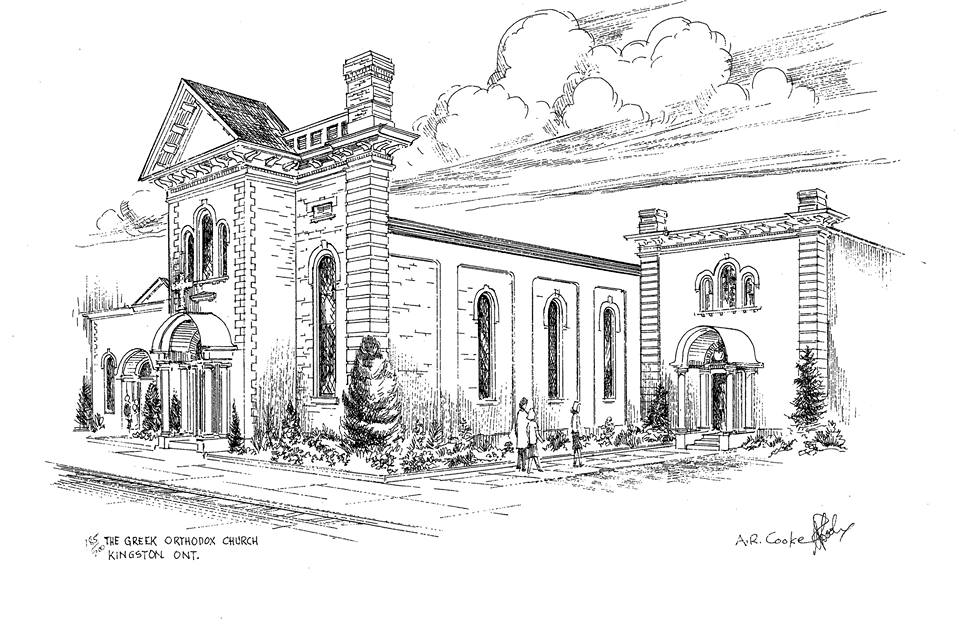
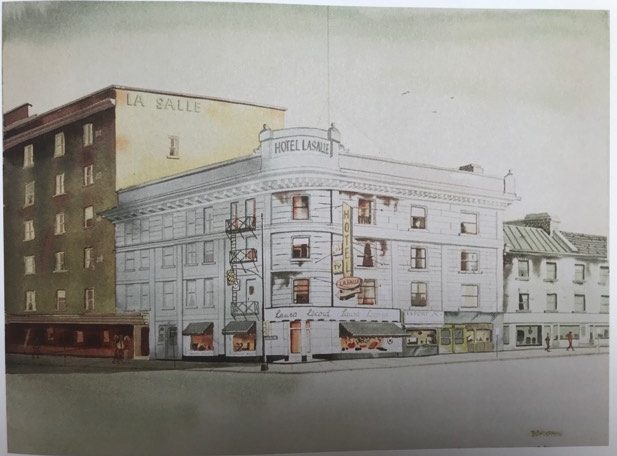
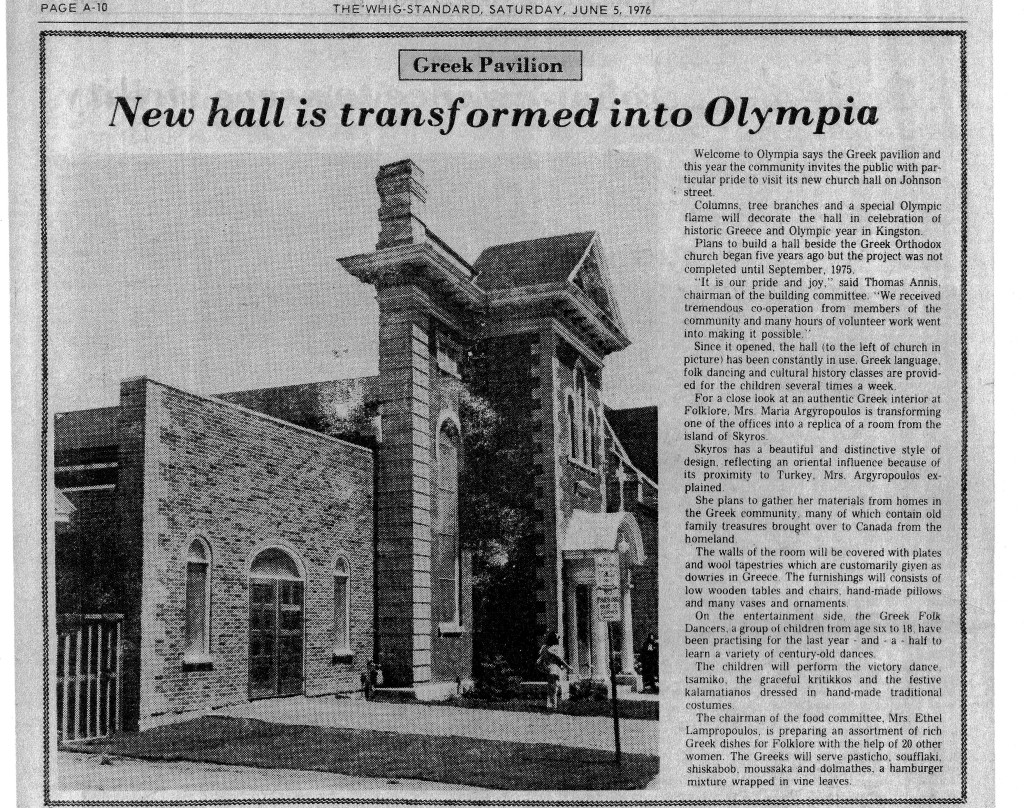
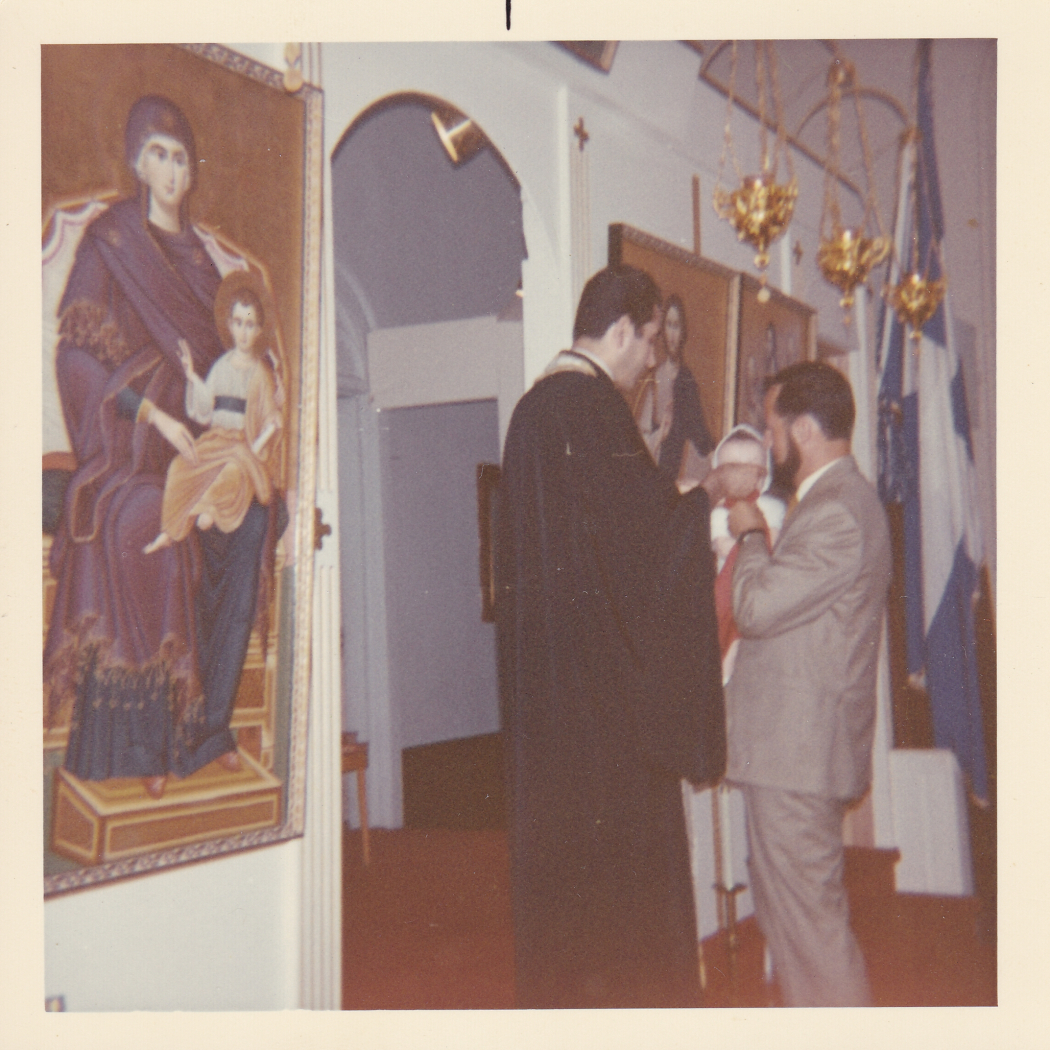
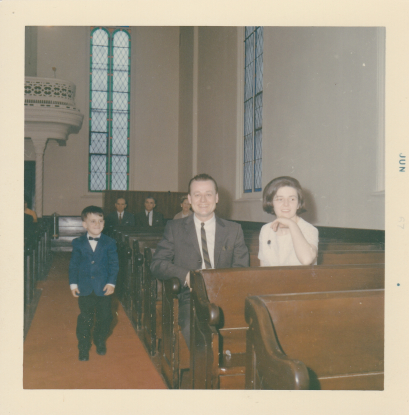
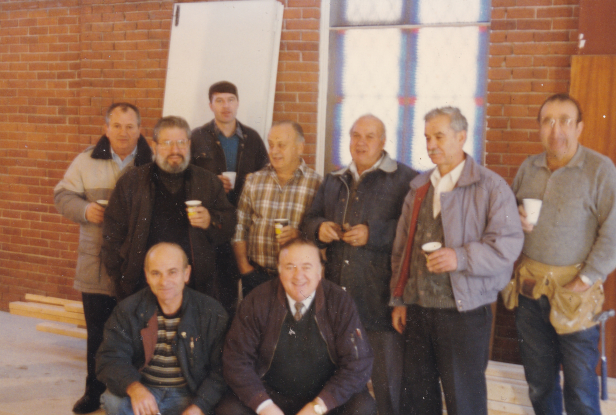
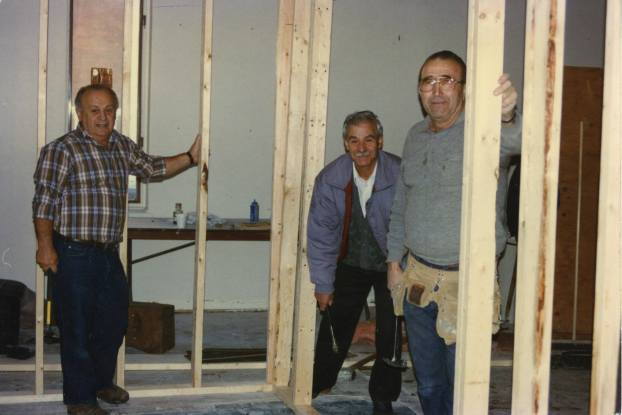
THE IMPORTANCE OF THE CHURCH
The Church plays a central role in any Greek Community. The church is an important site for cultural upkeep and community connection, since it is within the church that most important holidays, important rites of passage (such as baptisms and weddings), ethnic traditions (such as Greek dancing and Folklore), and important cultural institutions (such as Greek school and Philoptohos) take place. Because of the importance the church – as both a religious and cultural institution – has in the life of a Greek community, it is no surprise that the church became a crucial site for cultural upkeep among Greek immigrants in Canada.
As Fr. Matthew Penney, a former priest in Kingston’s Greek community, stated: “the life of the church is central to the life of the community. This is natural because the church is our home; and the church is not just the building but also the gathering of the people within it.” The Greek word for church, ecclessia, translates to “the gathering”. All important events in a member of the Greek community’s life are celebrated inside the church, such as baptisms, weddings, and holidays.
Fr. Chrysostomos Achilleos, another former priest in our community, also speaks about the importance of the church to the life of the community. “The church is absolutely a pillar of the community”, he says. “When our relatives came to Canada, they were strangers in this new land. They wanted to feel this sense of home, and the way to get people together was to build a church. It was two-fold: of course for the faith, but also for the ethnic community to be built around it.” Everyone can feel at home in our community: there are roles that everyone can fill.


